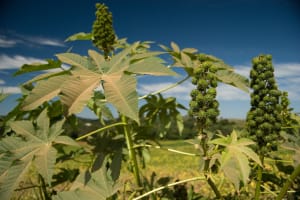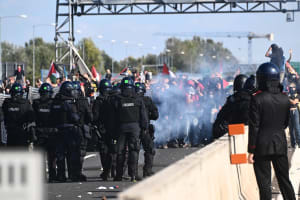Israel’s hybrid Tilapia phenomenon

Paralleling the growth of the reinstated nation of Israel was a peculiar, perhaps little-known occurrence that can be defined as hybrid tilapia native specifically to Israel with significance in the context of fisheries and aquaculture as a staple food. Genesis 22:18 says that through Abraham’s descendants (that is, Israel) all the nations of the earth will be blessed. While this verse is primarily speaking about the Lord Jesus, an Israelite, as a blessing for all, there is multi-faceted meaning in that there are secondary blessings which come through Israel to “all the nations of the earth”. Applicable in this regard is the contribution that Israel has made to the world with Tilapia. Not only have tilapia been extensively used as a food source in Israel [1], they have been introduced from Israel all over the world.
History
Lev Fishelman was a Jewish man originally from Poland who settled in Israel in 1949 and in 1950 joined Biological Institute in Tel Aviv, where as a researcher studied marine biology and specifically tilapia [2]. He discovered that a female Nile Tilapia (Oreochromis niloticus) mating with a male Blue Tilapia (O. aureus) resulted in a brood of all males [3]. Accordingly, Israeli fish-culturists hybridized the two for the higher growth rate of males and to regulate unwanted breeding [3]. However, it was found that hybrid broods were not consistently all males and it is possible that backcrossing occurred; only first generation hybrids are males only [3]. This necessitates having respective purebreds for the purpose of breeding to attain that benefit [4]. Lev Fishelson was the leader in organizing the first International Symposium on Tilapia in Aquaculture, held in 1983 at Nazareth [5], of all places.
Israeli Origins
The native ranges of the Blue Tilapia and Nile Tilapia overlapped in the coastal rivers of Israel, such as the Yarkon River [3]. Where co-occuring, these preferentially choose mates in the same species, but without the opportunity for conspecific mates, will hybridize accordingly [3]. The question arises as to if hybrids came about spontaneously in nature or by anthropogenic means; either way, the occurrence can be considered providential. The hybrids have a combination of traits inherited from both species [6]. Blue Tilapia have tolerance to a wide range of temperatures, thriving in hot conditions [7], and withstanding cold relatively more than other tilapia species [8]. The O. niloticus x O. aureus hybrid is favorable because of rapid growth rate and resistance to disease [9]. Of all places in the world, hybrids were initially commercially produced in Israel [6].
Food Value
Tilapia meat is high in protein and low in fat [8], and the meat is described as white and flaky with mild flavor [10]. Tilapia in general are sometimes criticized for having a musty/muddy flavor [8] or suspected of having contaminants. It should be understood that these factors depend on the environment from which the fish are taken; tilapia for consumption should come from clean and continually flowing water [8]. There have been many Israeli innovations with aquaculture systems and fish farming techniques. Israel’s tilapia phenomenon has helped to sustain a growing population as Jews returned to the land of Israel, but also benefited people around the world. It is articles like this one that can describe how Israel has become both domestically prosperous and blessing internationally, in fulfillment of prophecy.
References
[1] McBay, L. G. 1961. The Biology of Tilapia nilotica Linnaeus. Proceedings of the Southeastern Game Fish Commission 15: 208-218.
[2] Gorem, M. 2013. In Commemoration: Professor Lev Fishelson, renowned and respected biologist 1923-2013. Israel Journal of Ecology & Evolution 59(3): 164.
[3] Trewavas, E. 1983. Tilapiine Fishes of the Genera Sarotherodan, Oreochromis, and Danakilia. British Museum (Natural History).
[4] Hershberger, W. K. 2006. What Can History Tell Us about the Future of Aquaculture Genetics. The Israeli Journal of Aquaculture.
[5] Pullin, R. S. V., T. Bhukaswan, K. Tonguthai, and J. L. Maclean. 1988. Preface. In: The Second International Symposium on Tilapia in Aquaculture.
[6] Lazard, J. and M. Legendre. 1996. The Spontaneous Reproduction of Tilapia: an Opportunity or a Handicap for the Development of African Aquaculture. In: The Third International Symposium on Tilapia in Aquaculture. R. S. V. Pullin, J. Lazard, M. Legendre, J.B. Amon Kothias, and D. Pauly (eds.).
[7] Neori, A., M. Shpigel, L. Guttman, and A. Israel. 2017. Development of Polyculture and Integrated Multi-Trophic Aquaculture (IMTA) in Israel: A Review.
[8] Chapman, F. A. 2018. Culture of Hybrid Tilapia: A Reference Profile. Document CIR1051. University of Florida, Institute of Food and Agricultural Sciences.
[9] Zhang, Y.-F., Y.-R. Yue, L.-X. Tian, Y.-J. Liu, A.-L. Wang, H.-J. Yang, G.-Y. Liang, and C.-X. Ye. 2015. Dietary Phosphorus Requirements of Juvenile Hybrid Tilapia (Oreochromis niloticus♀ and O. aureus♂) Fed Fishmeal-free Practical Diets. The Israeli Journal of Aquaculture.
[10] Species Profile. Florida Fish and Wildlife Conservation Commission.

Josh Bowditch is an aspirer of stewardship in the Biblical sense. This includes ascertaining the truth and writing concisely about topics of interest.
You might also like to read this:

















